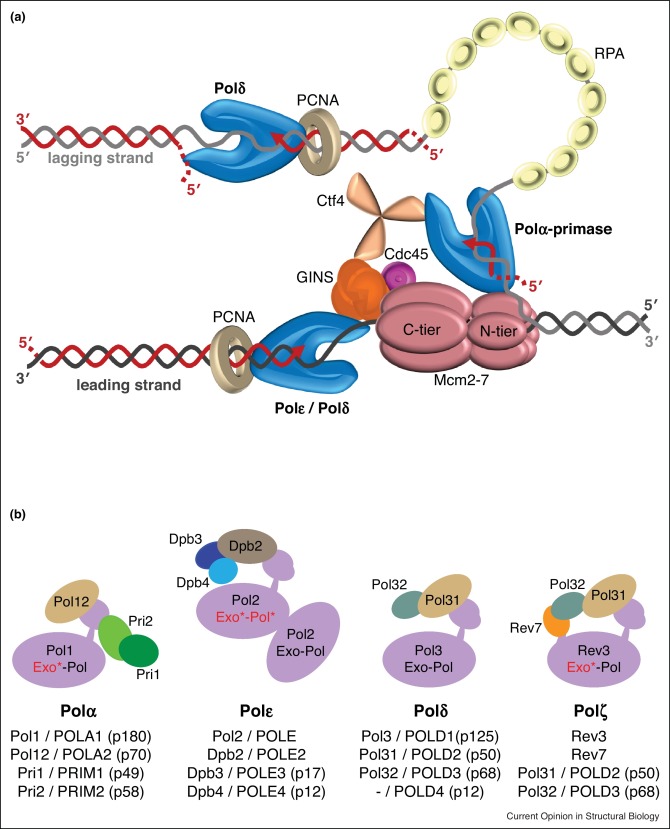DNA Polymerase- definition, structure, types (vs RNA polymerase)
DNA polymerase definition
DNA polymerases are a group of enzymes that are used to make copies of DNA templates, which are used essentially in the mechanisms of DNA replication. These enzymes make new copies of DNA from existing templates and also work by repairing synthesized DNA to prevent mutations. DNA polymerase catalyzes the formation of the phosphodiester bond that forms the backbone of DNA molecules. It uses a magnesium ion in catalytic activity to balance the charge of the phosphate group.
Structure of DNA polymerase
DNA polymerases generally have a conserved structure and therefore define their vital role in cellular function that cannot be replaced.
DNA polymerases are made up of subdomains that resemble an open right hand such as the palm, fingers, and thumb.
The palm contains the essential catalytic amino acids in its active sites.
The fingers play an important role in nucleotide recognition and attachment.
The thumb is for the binding of the DNA substrate.
There is a domain found between the finger and the thumb known as the pocket, which is made up of two regions, that is, the insertion site and thepost-insertion site.
Incoming nucleotides bind at the insertion site, while the new base pair binds at the post-insertion site.
Other subdomains along with these domains are specific to each family and each has essential functions in DNA replication.
However, these subdomains are different for each polymerase.
Structure of family A
In addition to the subdomains already discussed, family A polymerase also has a 5 'to 3' exonuclease that is used to remove RNA primers from
Okazaki fragments.
Some family A groups also have a 3 ′ to 5 ′ exonuclease activity that works to correct DNA.
Structure of family B
They also have the basic subdomains with 3 'to 5 extremely active; exonuclease to correct DNA replication errors.
Structure of the family X
These family groups have the thumb, palm, and finger subdomains that are structurally part of the N-terminus or in the 31 kDA polymerase
fragment.
The palm of this family contains three aspartic acid motifs, the fingers have M and N helices containing amino acid residues.
The N-terminus is connected to an 8 kDa amino-terminal domain that contains a 5 'deoxyribose phosphate lyase, which is essential in base cleavage
repair.
Structure of the Y family
The N-terminus of this group contains the catalytic nucleus of the palm, fingers, and thumb.
They also have a C-terminal that has a conserved tertiary structure of a four-stranded beta sheet supported on one side by two alpha helices, which
are also known as the little finger domain. They play a role in DNA binding and is essential for completing polymerase activity.
However, this family lacks flexibility, unlike the other families.
Types of DNA polymerase
Basically, the types of DNA polymerase are also divided according to the organism that possesses them, that is, eukaryotic and prokaryotic DNA
polymerases. These types of DNA polymerase are classified based on their characteristics, including structural sequences and functions.

